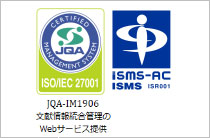ホームIMICライブラリMMWR抄訳2016年(Vol.65)可燃性および無煙タバコの消費 ― アメリカ、200・・・
2016/12/09Vol. 65 / No. 48
MMWR65(48):1357-1363
Consumption of Combustible and Smokeless Tobacco — United States, 2000–2015
可燃性および無煙タバコの消費 ― アメリカ、2000年~2015年
CDCは米国連邦消費税のデータから2000年~2015年における可燃性タバコ(紙巻きタバコ、手巻きタバコ、パイプ用タバコ、スモールシガー、ラージシガー)および無煙タバコ(噛みタバコ、乾燥嗅ぎタバコ)の総消費量および1人あたりの消費量を推定した。この期間、可燃性タバコ製品の総消費量は4,507億から2,999億cigarette equivalentsへ33.5%減少し、1人あたりの消費量は2,148から1,211 cigarette equivalentsへ43.7%減少した。2000年~2015年にかけて紙巻きタバコの総消費量は4,356億cigaretteから2,670億cigaretteへ38.7%減少し、1人あたりの消費量は2,076 cigaretteから1,078 cigaretteへ48.1%減少したが、2014年(総消費量:2,627億cigarette)に比べると2015年で増加し、1人あたりの消費量も7 cigarette増加した。紙巻きタバコが可燃性タバコ総消費量に占める割合は2015年にて89%であり、また、ルーズタバコおよび葉巻が可燃性タバコ総消費量に占める割合は3.4%から11.0%へ有意に増加していた。手巻きタバコの総消費量は2000年~2015年にかけて70.0%減少し、とくに2008年~2011年にかけて107億cigarette equivalentsから26億cigarette equivalentsへ75.7%大きく減少していた。一方、パイプ用タバコは2000年~2015年にて556.4%増加し、とくに2008~2011年に26億から175億cigarette equivalentsへ573.1%増加していた。スモールシガーの総消費量は75.6%減少、1人あたりの消費量も79.3%減少したが、ラージシガーは総消費量が179.6%増加、1人あたりでは136.8%の増加であった。無煙タバコに関しては2000年~2015年にて総消費量が23.1%増加、1人あたりでは4.2%の増加であった。噛みタバコ消費量は456億ポンドから202億ポンド(207億kgから92億kg)へ55.8%減少したのに対し、嗅ぎタバコ消費量は662億ポンドから1,174億ポンド(300億kgから533億kg)へ77.5%増加しており、これらさまざまなタバコ製品の消費動向を把握し、現状に適した禁煙対策を行うことが重要と考える。
References
- US Department of Health and Human Services. The health consequences of smoking—50 years of progress: a report of the Surgeon General. Atlanta, GA: US Department of Health and Human Services, CDC; 2014. <http://www.surgeongeneral.gov/library/reports/50-years-of-progress/full-report.pdf>
- World Health Organization. IARC monographs on the evaluation of carcinogenic risks to humans. Volume 89: smokeless tobacco and some tobacco-specific N-nitrosamines. Geneva, Switzerland: World Health Organization; 2007. <http://monographs.iarc.fr/ENG/Monographs/vol89/mono89.pdf>
- Hatziandreu EJ, Pierce JP, Fiore MC, Grise V, Novotny TE, Davis RM. The reliability of self-reported cigarette consumption in the United States. Am J Public Health 1989;79:1020–3. <http://dx.doi.org/10.2105/AJPH.79.8.1020>
- 4. CDC. Consumption of cigarettes and combustible tobacco—United States, 2000–2011. MMWR Morb Mortal Wkly Rep 2012;61:565–9.
- 5. CDC. Best practices for comprehensive tobacco control programs—2014. Atlanta, GA: US Department of Health and Human Services, CDC; 2014. <http://www.cdc.gov/tobacco/stateandcommunity/best_practices/index.htm>
- 6. Alcohol and Tobacco Tax and Trade Bureau. Tobacco statistics. Washington, DC: US Department of Treasury, Alcohol and Tobacco Tax and Trade Bureau; 2016. <http://www.ttb.gov/tobacco/tobacco-stats.shtml>
- 7. King BA, Patel R, Nguyen KH, Dube SR. Trends in awareness and use of electronic cigarettes among US adults, 2010–2013. Nicotine Tob Res 2015;17:219–27. <http://dx.doi.org/10.1093/ntr/ntu191>
- 8. Government Accountability Office. Tobacco taxes: large disparities in rates for smoking products trigger significant market shifts to avoid higher taxes. Washington, DC: Government Accountability Office; 2012. <http://www.gao.gov/products/gao-12-475>
- 9. Morris DS, Tynan MA. Fiscal and policy implications of selling pipe tobacco for roll-your-own cigarettes in the United States. PLoS One 2012;7:e36487. <http://dx.doi.org/10.1371/journal.pone.0036487>
- 10. Tynan MA, Morris D, Weston T. Continued implications of taxing roll-your-own tobacco as pipe tobacco in the USA. Tob Control 2015;24:e125–7. <http://dx.doi.org/10.1136/tobaccocontrol-2013-051531>
Copyright © 2013 International Medical Information Center. All Rights Reserved.












